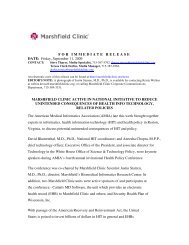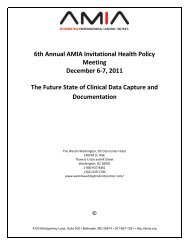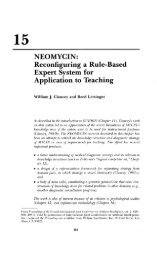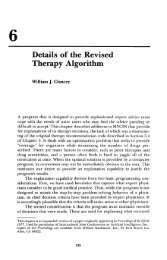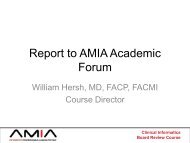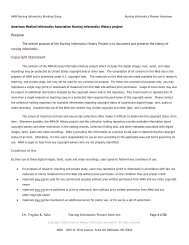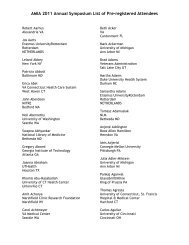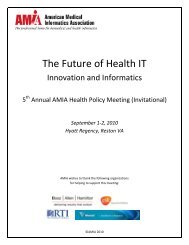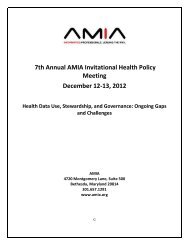Chapter 3 - People
Chapter 3 - People
Chapter 3 - People
Create successful ePaper yourself
Turn your PDF publications into a flip-book with our unique Google optimized e-Paper software.
60 The Evolution of MYCIN’s Rule Formmore complete discus-that were introduced, even though this anticipatessions in later chapters.1. The context tree: We realized the need to allow our rules to makeconclusions about multiple objects and to keep track of the hierarchicalrelationships among them. The context tree (described in <strong>Chapter</strong> 5) wascreated to provide a mechanism for representing hierarchical relationshipsand for quantifying over multiple objects. For instance, ORGANISM-1 andORGANISM-2 are contexts of the same type that are related to culturesin which they are observed to be growing and that need to be compared,collected, and reasoned with together at times.2. Instantiation of contexts: When a new object required attention, weneeded a mechanism for creating it, naming it, and recording its associationswith other contexts in the system. Prototypical contexts, similar inconcept to the "frames" of more recent AI work (Minsky, 1975), provideda mechanism for creating new objects when they were needed. These arecalled context-types to distinguish them from individual contexts. For instance,ORGANISM is a context-type.3. Development of MAINPROPS: Physicians using the evolving systembegan to complain that MYCIN did not ask questions in the order theywere used to. For example, they indicated it was standard practice to discussthe site, timing, and method of collection for a culture as soon as it wasfirst mentioned. Thus we created a set of parameters called the MAIN-PROPS for each prototypical context. 4 The values of these parameterswere automatically asked for when a context was first created, therebyproviding the kind of focused questioning with which physicians felt mostcomfortable. The benefit was in creating a more natural sequence of questions.The risk was in asking a few more questions than might be logicallynecessary for some cases. This was a departure from the pure productionsystem aproach of asking questions only when the information was neededfor evaluating the premise of a rule.4. Addition of" antecedent rules: The development of MAINPROPSmeant that we knew there were a small number of questions that wouldbe asked every time a context was created. In a pure backward-chainingsystem, rules that had premise conditions that depended only on the valuesof parameters on MAINPROPS lists would be invoked when needed sothere was no a priori reason to do anything special with such rules. However,two situations arose that made us flag such rules as antecedent rulesto he invoked in a data-driven fashion rather than await goal-orientedinvocation. First, there were cases in which an answer to one MAINPROPS4This name was later changed to INITIALDATA in EMYCIN systems.



